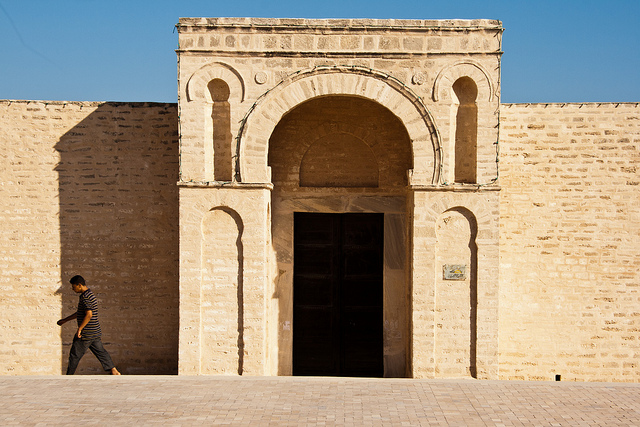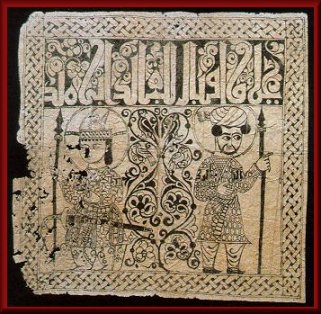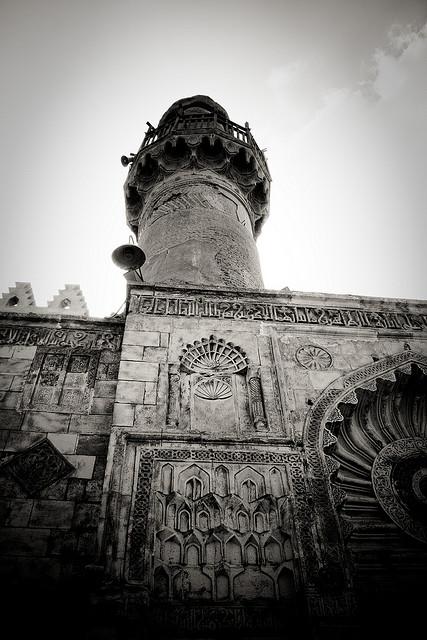Around the first millennium of the Christian era, a small group of Ismaili Shi’i Muslims established a dynasty that rapidly conquered North Africa from the Atlantic Ocean to the Red Sea. At the height of their power they conquered Egypt, where they founded the city of Cairo, and their Imam-Caliphs had their names read out in the holy cities of Mecca and Medina, rivaling the Abbasid caliph in Baghdad. And yet, despite three centuries of rule by a powerful Shi’i empire, North Africa remained—and remains—Sunni with nary a trace of its Shi’ite past.
In this episode, guest Shainool Jiwa from the Institute of Ismaili Studies in London illuminates an often overlooked chapter in the history of Islamic sectarianism, one in which religious differences were used to unify diverse populations under the rule of a minority government, rather than to divide and alienate them.
Guests
 Shainool JiwaHead of Constituency Studies at the Institute for Ismaili Studies
Shainool JiwaHead of Constituency Studies at the Institute for Ismaili Studies
Hosts
 Christopher RosePostdoctoral Fellow, Institute for Historical Studies, The University of Texas at Austin
Christopher RosePostdoctoral Fellow, Institute for Historical Studies, The University of Texas at Austin
Your books are on a period known as the Fatimid era—the Fatimid Empire—so, why don’t we start off by talking about who the Fatimids were and where did they come from?
Thank you, as I said, for having me with you.
The Fatimids were an Ismaili Shi’i dynasty who reigned over a vast swathe of the southern Mediterranean–North Africa–all the way from Tunisia up until Egypt and parts of Syria. They reigned from 909 to 1171, CE, so about two and a half centuries of rule over this southern Mediterranean swathe of land.
Let me ask a follow up question to that, which is that you mentioned that they’re an Ismaili Shi’i group. Who are the Ismailis?
The Ismailis are a branch of the Shi’a that are part of the proto-Shia community. Where they become a distinct group is after the time of the Imam Ja’afar as-Sadiq, who died in 765 CE; there was a split within the Shi’a themselves. Those who followed his son Ismail then come to be called the Ismailis, and those who followed his other son called Musa al-Kazim eventually come to be called the Ithna’asharis (ed’s note: often translated into English as “Twelvers”). So, that’s who the Ismaili Shi’a are.

As we can tell from the title “The Founder of Cairo,” the Fatimids come to be identified with Egypt. Is that where they got their start?
No, they arrive from Syria, but they started off in North Africa. They established themselves in what used to be called Ifriqiyya, which is parts of Tunisia and Algeria today, and the first city that they built, which is named after the first Fatimid sovereign, is called al-Mahdia. The person was Abdul al-Mahdi, the first Fatimid sovereign. Al-Mahdia, of course, is a coastal city that continues to exist and thrive in Tunisia today.
They found this small state in Ifriqiyya, in Tunisia. How does it grow to become a wider state? What were they doing there?
They begin as this Ismaili Shi’i North African dynasty, if you like, or this Ismaili Shi’i dynasty that begins in North Africa, but in the model of governance that they develop over the course of their fifty year rule in North Africa, they develop a way of being inclusive which means that although the majority of the people over whom they rule are actually non-Ismailis and sometimes non-Muslims. They develop ways of governance which enable Muslims from different Sunni backgrounds, Christians, Jews, and others to contribute to the endeavors of the state.
So, they are actually rather successful in their state building, and they build up a very powerful navy, they become economically extremely affluent, and it means that within sixty years of beginning their rule in North Africa they establish their rule in Egypt, and in fact for a whole century after it is they who get recognized in Mecca and Medina as the true rulers of the Muslim world at that time.
It’s very interesting that their reach becomes greater and broader across that whole Mediterranean region.
This is an interesting point that you raise, because up until this point the two known caliphates are that of the Umayyads and the Abbasids and they tend to be more about setting an example by ruling, but what you’re saying is that the Fatimids–were they interested in converting more people to Ismailism, or were they more interested in ruling over this large, heterodox state?
I think they do both—which is also very fascinating for me—and one of the ongoing issues of debate among the few people who do work on the Fatimids is this idea of, “What is it that they were really trying to?”
They had a very active da’wa (missionary) structure which was operating with the purpose of converting people to the Ismaili cause and that da’wa structure continues, like under the Abbasids a century and a half before—they also use the da’wa structure to come to power. But after they come to power, they dismantle the da’wa structure very quickly because it becomes an alternate source of power and that becomes a problem for them.
The Fatimids face a similar issue in terms of how they manage their da’wa, but they never disband it. In fact, the da’wa becomes an arm of the Fatimid state, the purpose of which is then to propagate for the cause of the Imam. But they don’t seem–I haven’t come across any evidence that shows they actually proselytize or convert in the territories in which they reign, but the da’wa continues to do that work outside the Fatimids lands.
Was this part of the Fatimid-Abbasid rivalry?
Yes, I think there is some of that, clearly. It’s also very interesting that the Fatimids, having begun, in that sense, from nowhere–emerging out of a 150 year period of what they call the “dowr al-sutr,” which is a period of concealment, which meant that you didn’t really know about the Ismaili or Fatimid Imam-Caliphs before then—they emerge from that kind of background, but when they establish themselves in North Africa they make the claim to be Imam-Caliphs almost from the get-go. And that’s interesting because you have the Umayyads of Spain, almost across the Mediterranean, where the Umayyads have established themselves almost since 755 CE, and yet they kept calling themselves Amir. They don’t take on the mantle of the caliphate like the Abbasids had, until 20 years after the Fatimids pronounce their caliphate, so there is clearly some dynamic going on there too.

Your book is about the Imam-Caliph al-Moizz. Who was he and why was he notable?
He’s the fourth of these imam-caliphs and his dates of rule are 953 to 975, CE. It’s a twenty-two year rule, a fairly short reign. But it is a reign where you find very significant developments happening within the Fatimids themselves. It is in his time that they make the transition from being a North African dynasty to being what I call a Shi’i Mediterranean Empire. They are able to extend their rule all the way to the shores of the Atlantic toward the west. There’s a very lovely story in some of these Fatimids sources that talks about how the commander Jawhar — who is the commander who is also sent to conquer Egypt — when he first arrives at the shores of the Atlantic, he has some live fish from the Atlantic put into clay jars and sent to the court of al-Moizz in Mahdia to show him that his reign now extends all the way to the Atlantic.
Then, also under al-Moizz, they are able to extend their reign all the way into Egypt, found the city of Cairo, and expand in that way so that they become a major Mediterranean power at the time.
So the conquest of Egypt is in 969 of the Christian Era. Egypt, at this time, is still over 50% Christian–and of course the Coptic Church has a very strong identity. How does this new group of Muslims, the leader of whom considers himself to be caliph, how do they deal with this? And how does the local population respond to them?
It’s very interesting, that question, and I continue to be fascinated at how savvy the Fatimids are at managing ethnic and religious diversity at that time in this region. I think that’s because they learn about this and how to handle and work with different groups–Shi’a, Sunni, Khariji–in North Africa and they seem to then implement the lessons learned there.

So, even in the way that the Fatimids arrive in Egypt—I think—is very interesting. It’s very instructive. The sources tell us–al-Maqrizi, whom I’ve translated in that first work that you were mentioning, is a Mamluk Sunni historian writing three hundred years later, but very interested in the Fatimids–it’s almost a Mirror for Princes for the Mamluks to say, “Look at how the Fatimids ruled in this region.” He gives us the story, for example, of one hundred thousands troops arriving in Egypt–it takes them seven days to cross the bridge at Giza, etc., but the army is pretty much ceremonial. All of the negotiations have been done before hand by the da’wa and the diplomacy route. There is hardly any fighting–there are no major battles certainly–in taking over.
I give you one example: when the Fatimids arrive in Egypt, what they do is that in terms of the administrators who were there serving from the previous regime, they don’t get marching orders lock, stock, and barrel. In fact, they actually retain most of the administrators from the previous Sunni regime, but they then have a North African, a seasoned one, paired up with an Egyptian one, and they continued ruling in that way until such time as whichever of the two is then seen as appropriate to now carry on. I think that in doing that, they provide this transitional way in managing their leadership and managing the governance of the state.
The other thing that I think is very interesting, particularly regarding the point that you were making that, absolutely, the indigenous population in Egypt at that time was significantly Coptic, and large numbers of them, so how were they to manage? We know that the Copts and some of the Jewish community as well were part of the administration of previous regimes because that was naturally the case, as you would expect. What they Fatimids do, which is maybe a little more distinctive, is that they enable some of these officials to rise through the ranks of the Fatimid administration. So, for example, you have a chief minister at one point under al-Moizz’s successor al-Aziz named Issa bin Nestorius who is a Nestorian Christian, and who rules as Chief Minister. He does not now have to become a Muslim to serve in an Ismaili Caliphate. That, I think, that model of opening it up in that way and being more inclusive regardless of religion I think means that the Fatimids do two things: one, they don’t just remain a minority government ruling over minority groups, they are allowing these people to rise and serve. They get the most competent people available to actually serve in their administration, but they also get those communities to be more inclined to Fatimid rule. It works both ways.
The other–they’re not really a minority group–to look at is that Egypt was a Sunni province, or Sunni nation who’s now being governed by a Shi’i dynasty. How does that play out over the trajectory of Fatimid rule?
Yes, it’s very interesting that in the guarantee of safety that the Fatimids issue when they first arrive in Egypt, which was the norm in which people assured themselves, or the notables, or segments of the population assured themselves of the guarantee of their life and their livelihood, as it were—when the Fatimids issue that guarantee of safety they very specifically mention the Sunni populace, and they talk about the fact that those who have followed the companions of the Prophet, and the jurists who come after them in giving their legal opinions, etc, those are all valid. So, in their very arrival in Egypt they are also announcing that Sunni Muslims of different mathhabs—whether they are Shafi’is, Hanafis, Hanbali, Maliki—are actually accepted and they go further and announce that each of those groups can actually practice their mathhab in their mosques, which the Fatimids provide the upkeep for, and also by and large the acceptance of their practices.
So, they create, I think, a platform by which people of different religious traditions–including Jews and Christians–are allowed to be practicing their own interpretation so long as, overall, public order was maintained and so long as, as far as the public square goes, it’s the Fatimid writ that prevailed.

What happens to the Fatimids? As you mentioned, they ruled for about two and a half centuries, what was their eventual outcome?
One question that often gets posed to me is, “Well, ultimately they failed, because Egypt remained Sunni.” That is certainly one reading. But I don’t get the sense that the Fatimids set out to convert the people whom they ruled over. Unlike the Safavids, in Iran, a few centuries later where you find that Iran was mainly non-Shi’ite–Iran was Sunni–pre-Safavid, post-Safavid it is mostly Shi’a. Now, of course, it is because of the various syncretist movements, the Sufi tariqas that develop under the Safavids, so it’s not like for like, but I find that under the Fatimids, who are, by the way, the only Shi’a dynasty that have ever ruled over Egypt, pre the Fatimids and post the Fatimids, that doesn’t ever seem to have been the Fatimid goal. So they rule over that long period and eventually, like any dynasty as Ibn Khaldun would remind us, there is a rise and a fall. And there are various reasons for it — there are certain internal weaknesses that develop, particularly the Fatimids are susceptible when it comes to succession. Because they pay such close attention to lineal descent, if there are any splits within the reigning family itself, about competing claims being made by another son, for example, it’s more susceptible to splits within the family. And when you have that, of course, it creates splits among the believers about who they are to follow. So there is some of that that happen in the time of al-Mustansir bi-Allah, and you have those who end up following his son Nizar, who come to be called the Nizaris, and those who follow his other son called al-Mustali, who then go on to split into further groups–into the Taiyibi da’wa, and then further into what we call today the Dawudi Bohras in India, and the Suleimanis who live in Yemen and parts of Saudi Arabia, you get those splits happening which is due to an internal fissure.
But you also have external factors, of course, the arrival of the Crusades in the region, the rise of the Seljuks, and therefore the strengthening of the Abbasids, and various other reasons for, eventually, their decline and their downfall in 1171.
And they are conqured by Salah al-Din–
Yes, they are! By Salah al-Din al-Ayyubi.
–who goes on to create his own dynasty.
Interestingly he comes in initially and serves as a wazir to the Fatimids, but then also dismantles them very quickly after.
–As politics tends to go.
Yes, absolutely!
Related information
Shainool Jiwa’s faculty page at the Institute for Ismaili Studies: http://www.iis.ac.uk/view_person.asp?ID=5&type=auth
Author interview, Towards a Shii Mediterranean Empire
Author interview, The Founder of Cairo: The Fatimid Caliph-Imam al-Muizz and his Era.